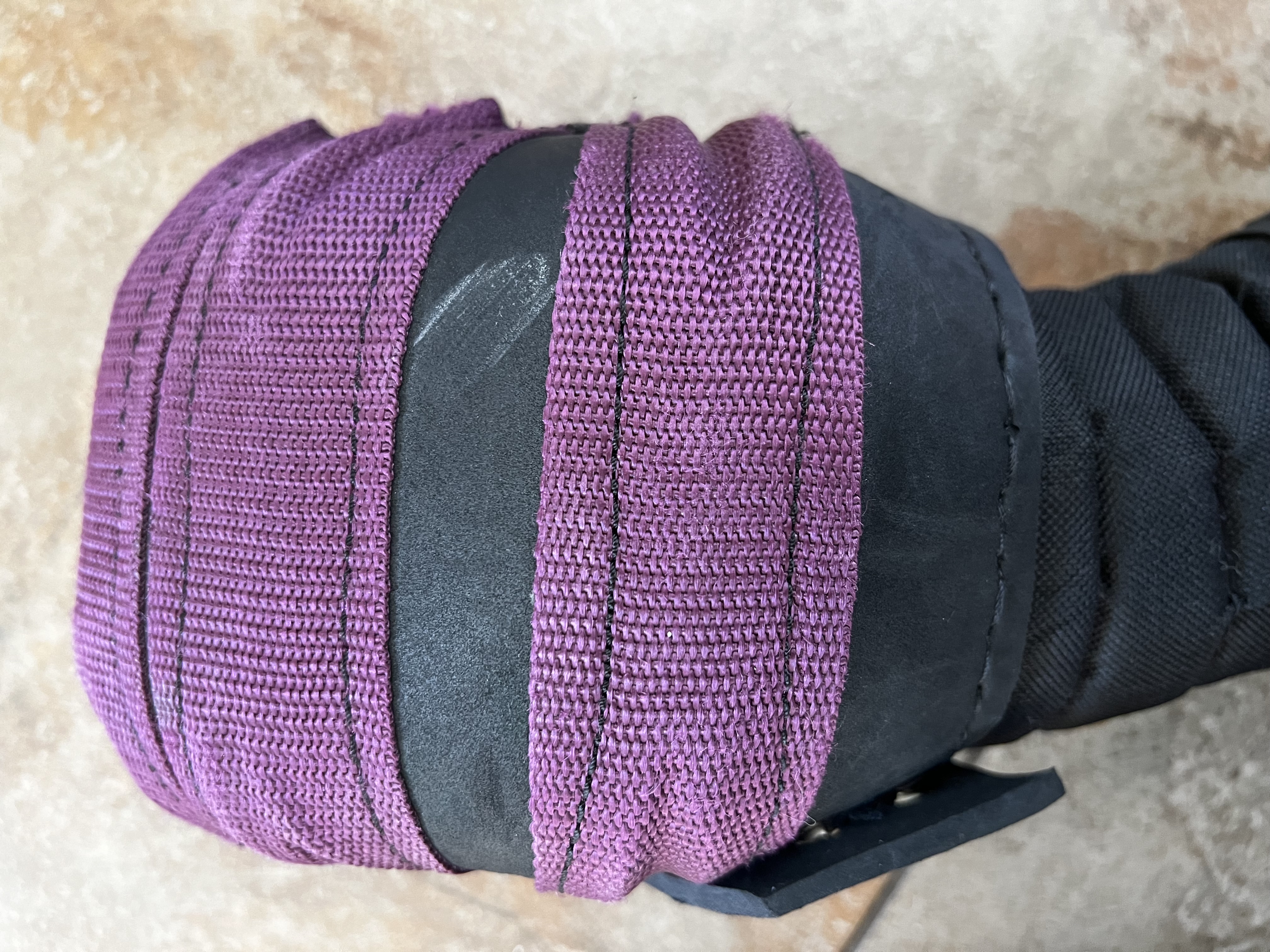
Posted: 23 November 2022 | Last modified: 27 November 2024 | Expires: 19 August 2025
The Mittens by Sparring Gloves are one of the oldest models of heavy longsword gloves on the market, and have# had steadfast popularity for years now. The general consensus among practitioners is that clamshell/mitten gloves, where your fingers are all covered by a single outer layer of shielding, offer the highest level of protection due to a simpler design and better finger coverage. Models with individual finger coverings (i.e. “five finger gloves") are not as proven, and for a long time the default glove recommendation usually came down to one of two options: the Sparring Gloves Mittens, or the SPES Lobsters. While one may intuit that gloves in this form factor would compromise mobility compared to a five fingered glove, this isn’t really the case, as such gloves still provide enough mobility to adjust one’s hand to roughly any position that wielding a longsword requires.
Sparring Gloves is a company based in Poland, and their US reseller is Purpleheart. Sparring Gloves sells a few models of gloves for the HEMA market, but the Mittens seem to be their most popular, and for a long time they were the de facto standard heavy glove used in longsword competition throughout Europe, owing to their simplicity and proven level of protection. As the model name suggests, there is one pocket for your four fingers, enclosing them under a sheet of hardened foam, with padding beneath it. The main material of the glove is described as “styrogum hardened and compacted” with a thickness of 8mm for the main glove, and 6mm on the cuffs. A cordura band over part of the exterior offers abrasion resistance, and Poron padding on the interior provides additional impact absorption.
The Mittens run about $230, and you can get custom sizing and color options for the external nylon band, stitching, and laces. These customization options, for not much more money, is a nice change from “HEMA black”, especially if you want to color-coordinate your gear.
The Mittens come in three different forms, the main difference being the length of the wrist cuff. The “standard” and “extended” lengths are of similar construction, with the latter being long enough that you could forego separate forearm protection, and the former offering upper forearm protection but not enough to cover the lower forearm near the elbow.
Both these versions come in the older “accordion” style, where thin plastic plates cover the wrist, but they are also now offered with a new wrist style where the wrist is covered in a thin foam layer sandwiched between cordura. A styrogum cuff is attached to the bottom of either wrist section.
A fair argument I’ve read, which I agree with, is that the standard cuff length is kind of pointless. If you want some semblance of forearm protection, get the extended/long cuff version, and if you don’t, get the third form the glove comes in: the hourglass version. Plus, if you do end up wanting to shorten the cuffs on the extended version, you can do so easily with a craft or utility knife.
The hourglass version has a much shorter cuff extending immediately from the upper glove area. Most people agree that this version’s wrist protection is better than the old accordion cuff, but I don’t know how it fares against the newer non-hourglass cuff. Since the hourglass cuff flairs, it has a greater chance of receiving glancing strikes, which may be a consideration for potential buyers.
I’ll be upfront and say that the Mittens are the gloves I really wanted to love. The fact that the construction is mostly sewn, with few moving parts, makes for a very maintenance-free glove, and the thinner profile and lighter weight of these over hard clamshell gloves was appealing.
I ended up ordering a pair of the extended cuffs with custom colors and sizing in November, 2021. I wanted a band that was either dark grey to match my fencing mask bib, or a crimson red to match my sword grip, but neither color was an option. I settled on a purple band, with black stitching and laces, and the combination didn’t disappoint. The purple was a darker tone that looked really good, adding just enough of an accent color to stand out.

It took a few months to get my gloves, so in the interim I purchased a pair of SPES Red Lobsters, which provided me a good initial baseline with which to compare the Mittens to. While I’ve also worn a friend’s hourglass Mittens in a pinch, this review is mostly concerned with my accordion-style long-cuff Mittens.
I also want to add that while this review was initially posted after owning the gloves for a year, my use of the gloves was not exclusive during that time, and the intensity of my sparring wasn’t particularly high that year, which is evident by the pictures of the gloves posted herein.
Upon getting the Mittens, they initially felt pretty stiff, and though this got better with time, I feel the Mittens need more break-in time than other heavy gloves due to the styrogum they’re made of and the fact that most of the Mittens is sewn together. Styrogum is a material used in shoe soles, so it wears well but as with other shoe sole materials, does require a period of break-in before feeling comfortable during movement. Compared to clamshell gloves that have floating plates, where your hand is primarily only operating the underglove, your hand in the Mittens is using more muscle to bend the styrogum when holding a weapon. I found this to be more noticeable for some reason when using one-handed weapons, perhaps because I tend to have a much tighter grip than when supporting a weapon with two hands where a tight grip is most essential only on impact.
Per Sparring Gloves’ website, a pair of Mittens weighs 730g, with the extended cuff version weighing about 10g more, and the hourglass version weighing a mere 570g. I didn’t get around to weighing my pair until after using them for a bit, but when I did, the pair weighed in at 727g (lower than the 740g estimate). Interestingly, the gloves did not actually weigh the same; one glove weighed 387g, and the other 340g, a difference I didn’t expect. The difference was obviously not noticeable when wearing them, and I assume the discrepency may be because the gloves are hand-made and perhaps the cuts to the foam components on one glove left a bit more material than on the other glove.
| Model | Weight (g) | Widest Point (cm) |
|---|---|---|
| Sparring Glove Mittens (long custom) | 727 | 14.75 |
| CHFG Michaels (L) | 820 | 12.9 |
| HF Black Knights (M/L) | 842 | 14.5 |
| SPES Red Lobsters (M/L) | 1,165 | 16.5 |
| ProGauntlets (L) | 992 | 16 |
Unique to the Mittens is that there’s no “inner” glove, meaning that when you put the Mittens on, the underside of your hand (the palm) is exposed. Most people will therefore wear a separate underglove, and there are lots of opinions about what to get. Naturally, the weight of the underglove should be factored in to the total weight of the set, so while the Mittens are notably the lightest in the chart above, the gap is actually narrower.
Usually, folks opt for some sort of glove from the hardware store, often with some sort of cut resistance and/or additional impact absorption. I repurposed a pair of cut-resistant work gloves with rubberized underside for better grip. I did try using the Mittens without an underglove a couple times, but found the lack of palm protection disconcerting, and the inner part of the Mittens wasn’t really comfortable near my fingertips due to the placement of the inner foam, so the underglove was preferable. What I didn’t like is that after an intense sparring session, after being hot and wanting to quickly strip gear off to cool down, I had to deal with that extra step of taking off my undergloves, and then later putting both layers of gloves back on. It sounds inconsequential, but somehow I found this to be rather annoying.
The underside of the Mittens, above your palm where your fingers go, is made of a thin material that doesn’t offer a lot of proprioception for your fingers. When the underglove was added, I found a lack of grip-feel that I didn’t have with other gloves. That thin material isn’t very malleable; it’s taut and prevents your fingers from really sinking in on your sword handle, unlike the undergloves on other heavy gloves which are more forgiving. Over time, this material wears in a bit and becomes more pliable, and ultimately, as with other gloves, may develop holes as it wears and require patching. I didn’t experience that with my pair given the timeframe I used them for, but I’ve seen this occur with other’s Mittens that have been used for over a year with regularity.

I mentioned earlier that I ordered my Mittens custom sized, but I was never quite happy with the fit, specifically for the thumb. The thumb is fully-enclosed for maximum protection (which is great), but I found the movement of the thumb to feel weird, and I could never quite get past it. I attribute this partly to the shape of the thumb plastic, partly with the material on the bottom of the thumb, and perhaps partly with how the thumb is attached.
When sizing your hands for the gloves, I was advised to measure my hands without an underglove on, and that Sparring Gloves would factor underglove size into their process. I found that to be a strange claim, seeing as undergloves with added impact protection drastically change hand size. Since owning my pair reviewed here, I’ve tried on stock sizes of small, medium, large, and extra large Mittens. My natural hands with maybe a thin underglove fit a medium, possibly a small. However, when I tried wearing a cut-resistant underglove with impact protection under the gloves, I couldn’t even get my hand into a medium, and I felt very restricted in the large. The extra large may have worked, but even then I found myself fighting the glove even more than usual.
My recommendation is that unless you plan to wear a very minimalist underglove, you should find the underglove you want, and then take size measurements with those on.
I also used the Mittens for eskrima, and here the gloves were fine when using a stick, even though I expected them to have inadequate grip. When I shifted to a synthetic blade with short grip, however, the Mittens didn’t fit properly due to the styrogum exterior flaring a bit at the sides.
A rough measure of the width of the gloves showed 5.81”, or about 14.75 cm. On paper this sounds slim, but it only goes for the outer area; the inner part of the glove with which you grip is effectively the same as the outer area due to the lack of an integrated inner glover, so your gripping surface is actually wider than other gloves which have a much narrower underglove grip compared to their outer plate area. So yes, the outer area is slimmer than other gloves, but the space required for gripping is larger.
So, despite the narrow profile of the Mittens, I found getting a proper grip on certain synthetics problematic, so couldn’t rely on the Mittens as my only gloves for eskrima sparring. You can see this problem in the picture below, where I’m trying to hold a Native Clan Training Blades’ curved sansibar.
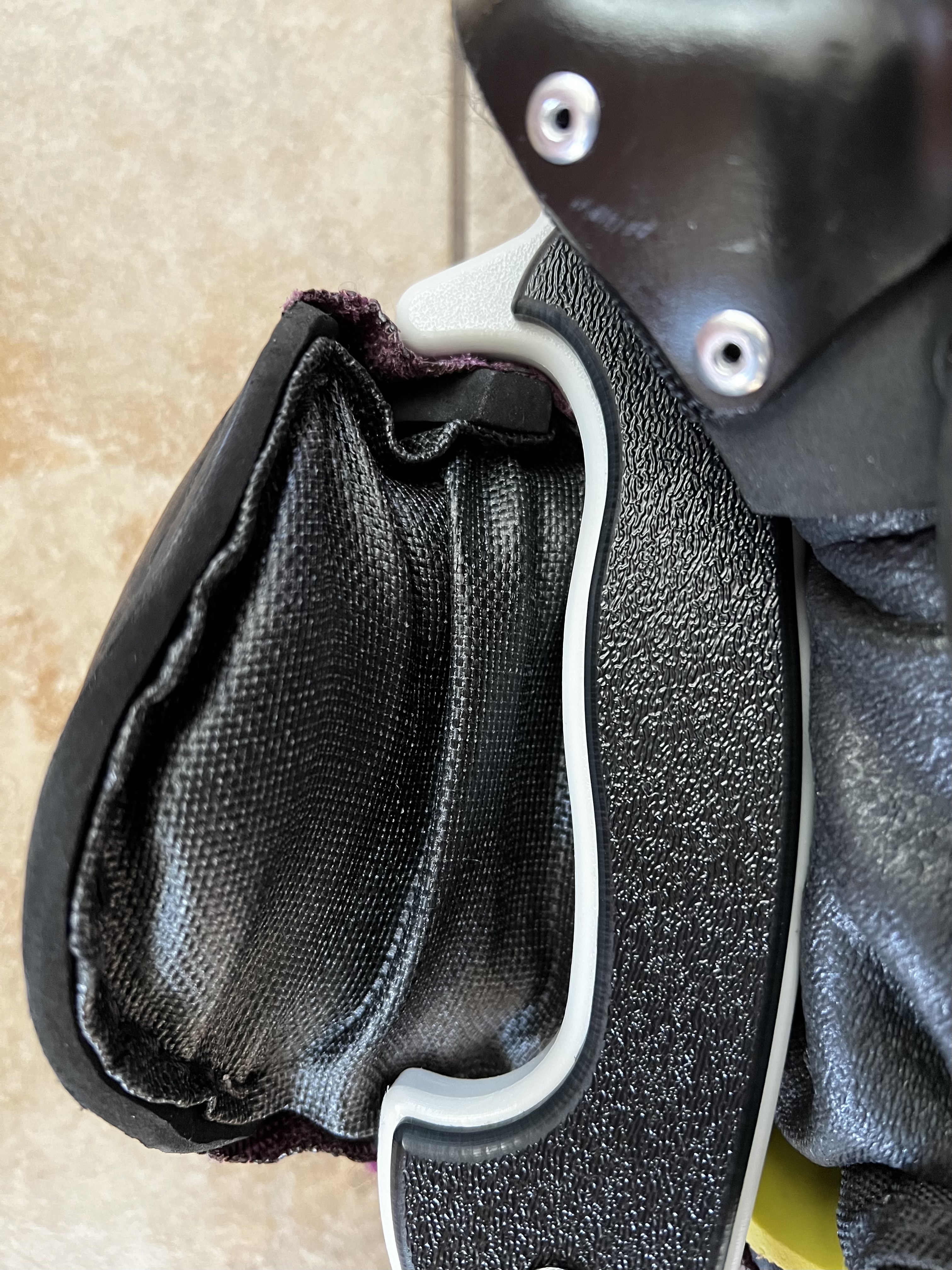
When wearing full kit, the extended cuffs fit over your jacket sleeves, not under them. I found I had to keep the cuff laces really loose, such that the gloves didn’t bind on the jacket and restrict my movement. The included laces are plenty long to allow this. If this is your only pair of gloves, you obviously don’t need separate forearm protection, but since I was often switching between gloves, I had to strip off my forearm guards every time I decided to use the Mittens, and put forearm guards back on when I switched to a different pair of gloves. That can be cumbersome, and putting these on over a pair of separate forearms is too bulky and movement-restricting.
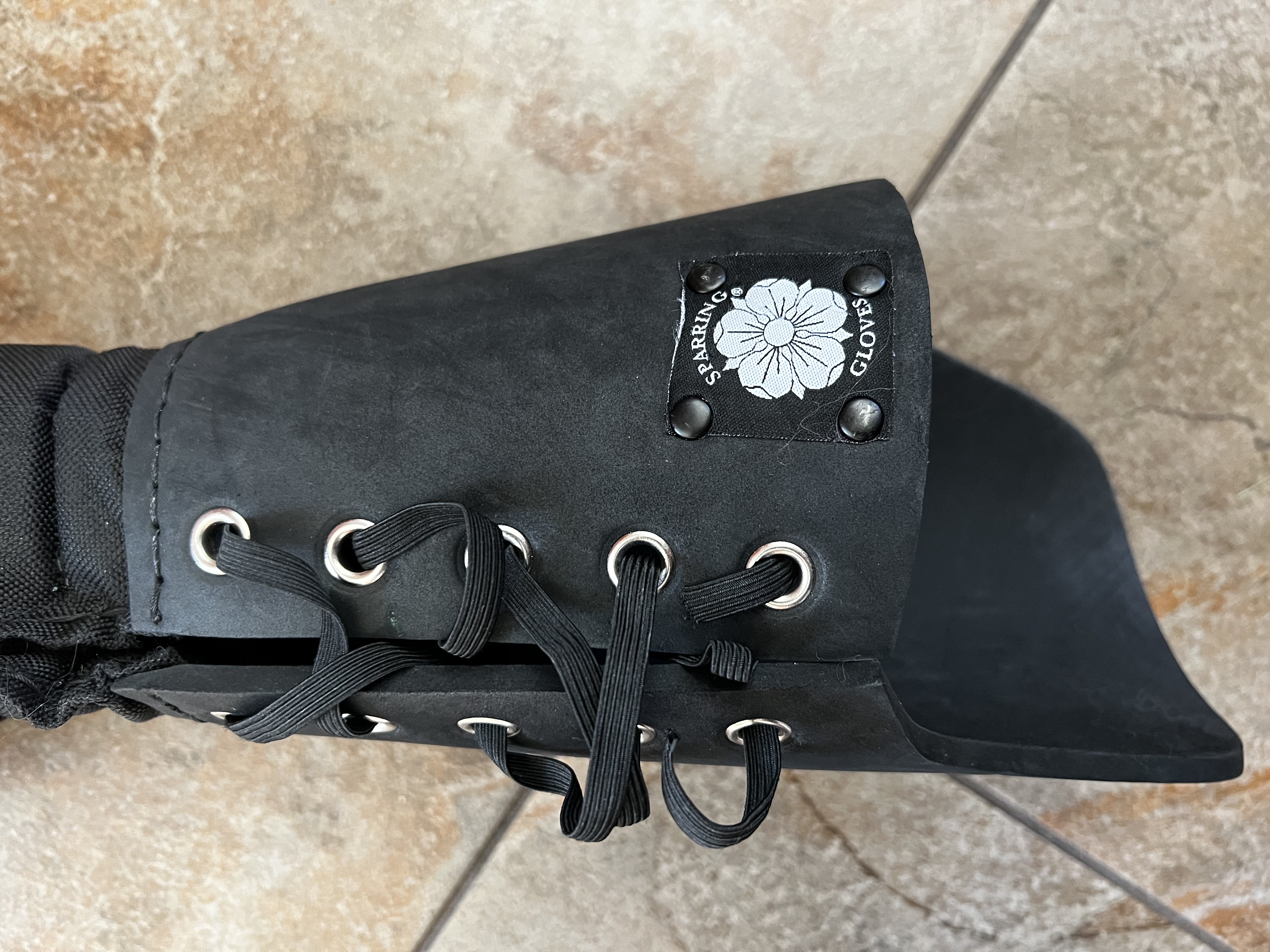
If you’re like most people, this probably isn’t an issue for you because you won’t be swapping between different heavy gloves between sparring sets. My intention was to ultimately settle on one pair of gloves myself, but as much as I like the idea of the extended cuffs, I don’t know that I’d order them again, due mostly to the weaker wrist protection compared to the hourglass version. That said, I am curious if the “new” design for the wrist area on the long-cuff versions is adequately improved.
The bottom of the thumb is made with a thin fabric, and my initial feeling was that it would wear a bit more than expected, but in retrospect, I don’t think it wears more than the underside of other gloves’ thumbs. I do wish the tip curved over the thumb more.
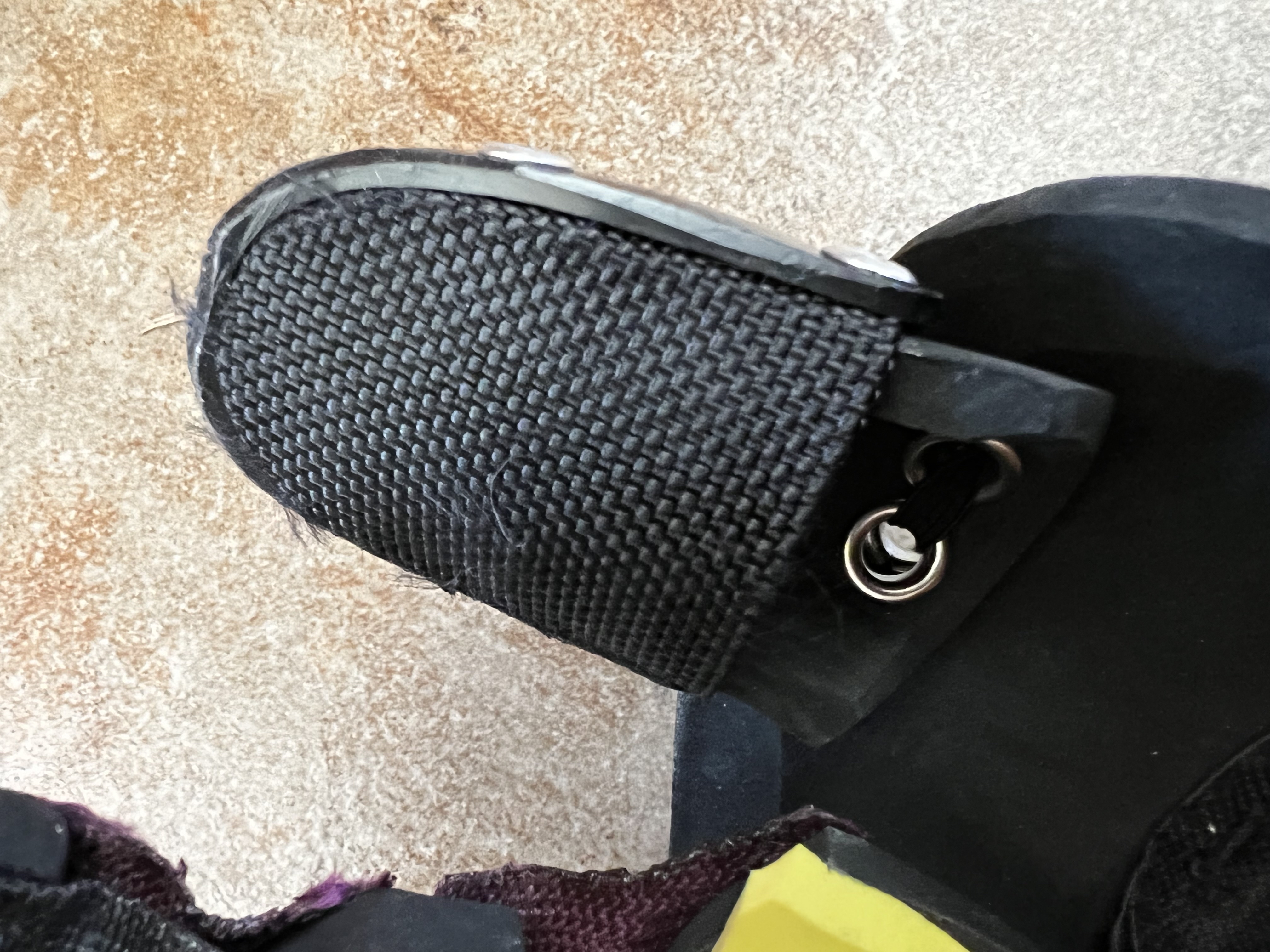
The thumb is attached with lacing, and so can theoretically be adjusted pretty easily. I probably should have tinkered with this a bit more to see if I could have made the thumb feel better for me. A common point of failure on these is wear on the thumb lacing, which you can see starting in the picture below. Chances are, you’ll spot this wear before it becomes a problem, however, and obviously, replacement lacing is cheap and easy to find, and can be replaced quickly.
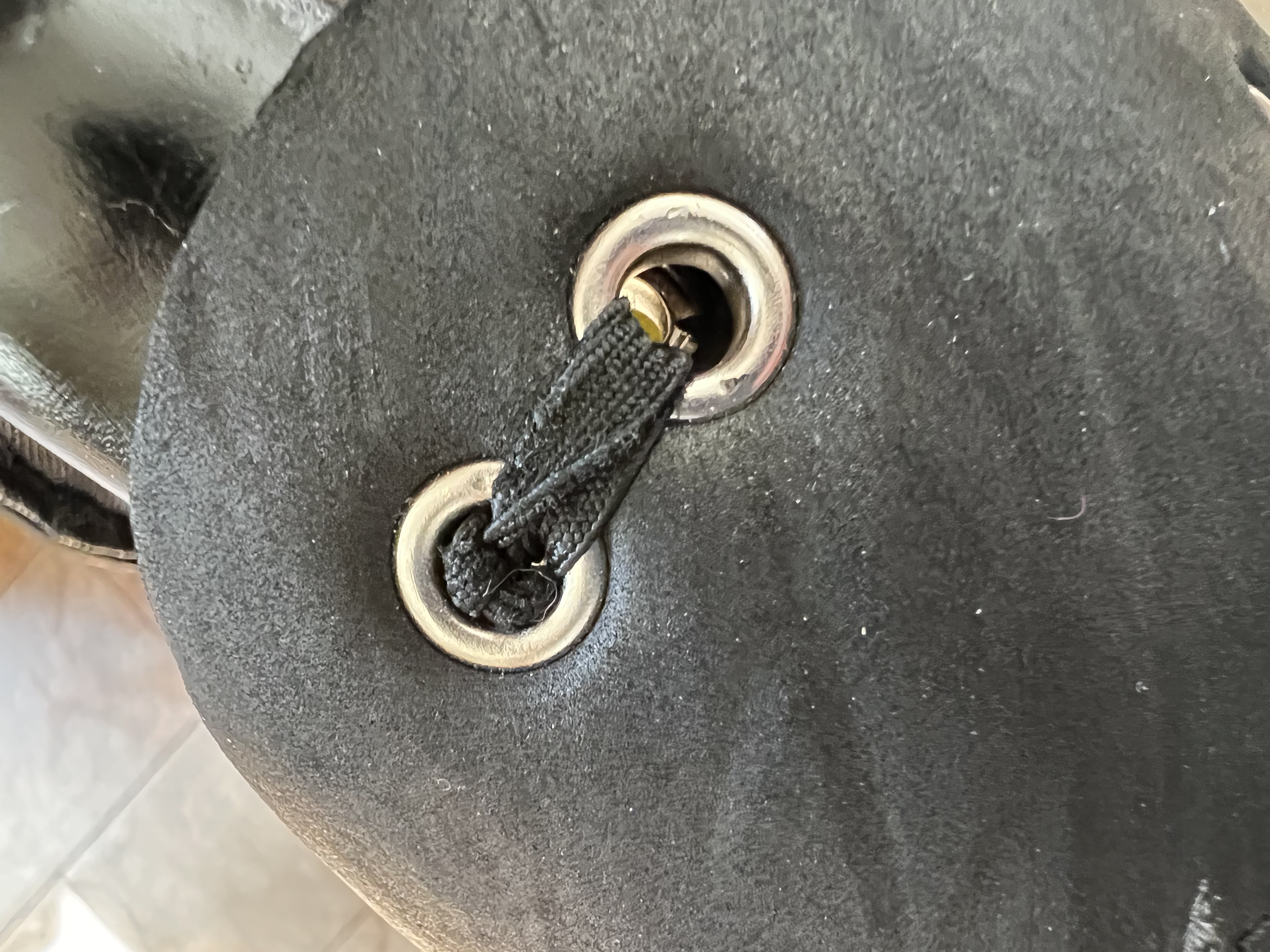
The plastic on the sides and top of the thumb provides good protection, but compared to other gloves’ thumbs in today’s market, I find the thumb on the Mittens pretty simplistic, and offering less protection overall.
My right thumb did show sufficient outer wear, which makes me think the plastic used is softer than on other gloves. However, I haven’t heard complaints of the plastic actually failing and compromising safety.
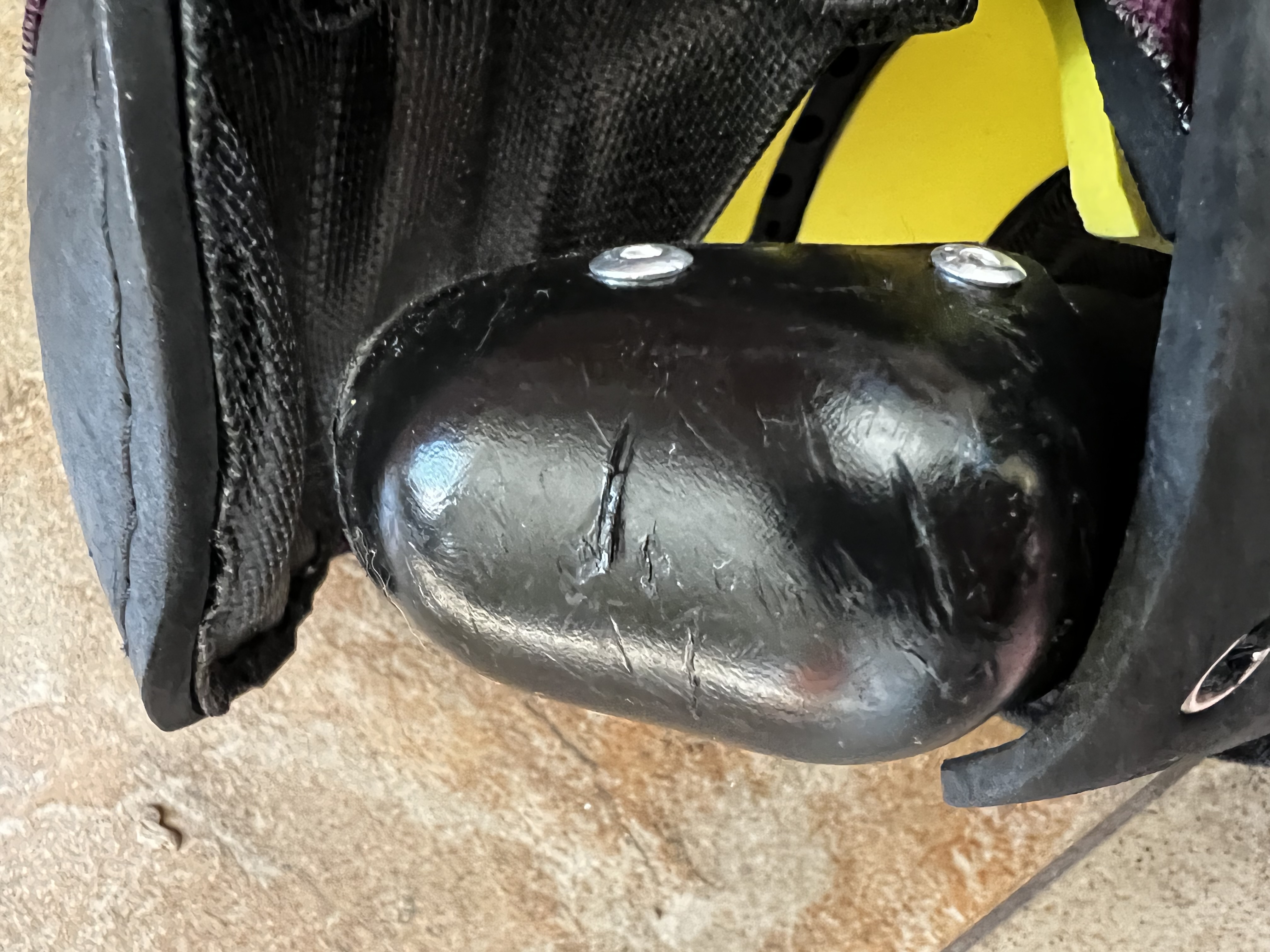
I’ve seen some Mittens require mending the styrogum due to splitting after heavy use. On the positive side, this is a comparatively easy thing to do, whereas splitting of plastic plates is generally considered to be an end-of-life condition for hardshell gloves. There are also some reports of people being stabbed through the styrogum, but these incidents seems very rare, and potentially tied to poor tip designs of certain longsword models. These incidents are much less frequent than, say, split plates in Lobster gloves, but I wanted to mention it since they’re not unheard of.
Protection-wise, the gloves worked fairly admirably and within my expectations. Many folks comment about how you can still feel hits, but enough of the impact is absorbed where you usually don’t feel pain. That was generally my experience, with the exception of the wrist area, which I found to be too thin. The accordion-style plating in this area allows for good wrist movement, but the plates are thin, and others have reported the plates breaking after some impacts, and sometimes slipping out of their enclosure after the outer material rips. It wasn’t common that I took hits here, but when I did the hits were noticeable in a negative way, and I considered modifying the gloves to cover this area better. Others suggested pushing the cuff up into the body of the glove, such that they disappear and the long styrogum cuff appears to start immediately from the main glove body. This worked fine, but at the cost of some wrist articulation and a short length less forearm protection.
Worth noting is that hits are very muffled in these gloves, with no audible thud like with gloves that have exterior hard plating. I generally consider this a positive, especially because the wearer will still feel the hits in some way (though not painfully), so there’s still good feedback, but without necessarily making it obvious to everyone else that you got hit in the hands.
Regarding the cuff itself, I initially found the extended cuff beneficial, as it offered forearm protection even when I wasn’t wearing full kit. As I was also doing a bit of eskrima in addition to HEMA when I had these, the Mittens initially became my preferred eskrima gloves (as I didn’t wear full kit when sparring with rattan sticks), so having forearm protection without additional gear was great. The cuff wears well, and while you can see some marks from hits left behind, it adds character without looking overly worn or damaged.
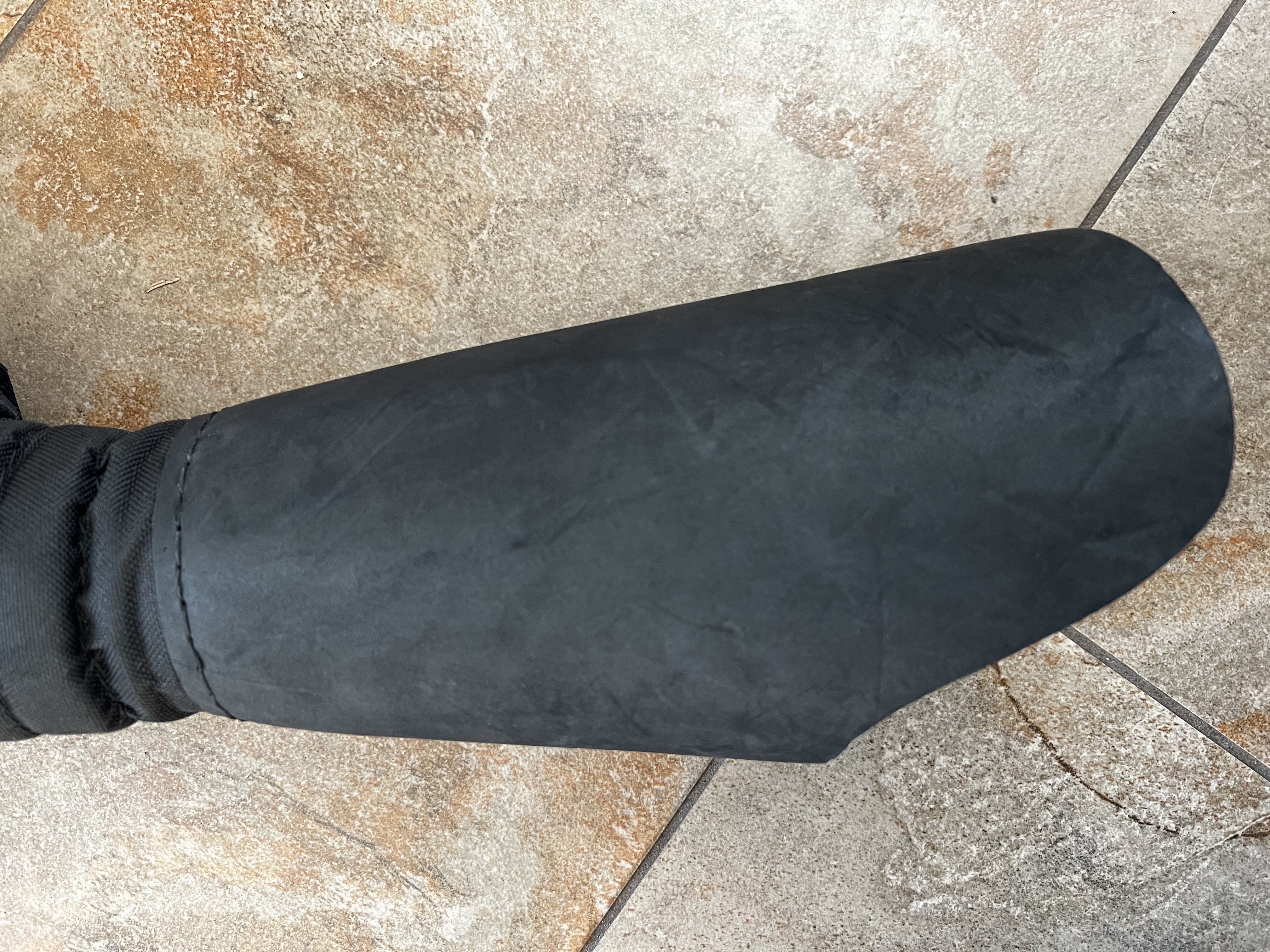
One note I’ll add is that as of September, 2023, I witnessed two injuries in hourglass Mittens at the webbing between the thumb and index finger, due to inadequate coverage, resulting in the wearer needing stitches. The first instance was from a crossguard being rammed into the victim’s hands, and the second instance was from receiving a thrust to the hands, where the point of the blade got under the styrogum here and pushed it away. It’s unclear if a burlier underglove would have prevented either injury, but I feel these anecdotes are worth noting, particularly since I haven’t seen similar happen in other heavy gloves.
If you want a pair of heavy gloves that don’t require much maintenance, the Sparring Gloves Mittens are a good option. There’s a reason these were the quintessential heavy gloves in the largest HEMA scene globally for so long. The biggest trick, I think, is getting sizing to be just perfect, so that the gloves fit properly with your chosen underglove.
If I had to order another pair of Mittens, I’d likely go for the hourglass version, if only because the newer wrist design on the long cuff versions seems unproven still. The hourglass version will provide better wrist protection, and while it means you do need separate forearm padding for intense sparring, it at least gives you the benefit of a modular kit. Most forearm protection is place-and-forget on a jacket anyway, thanks to arming points or attachment to one’s elbow guards.
For what it’s worth, I didn’t keep my Mittens. Between my distaste for having to wear a separate underglove and my inability to use these with my eskrima synthetic, I didn’t have room for these in my kit bag. They were also a bad backup option for me because my other gloves required separate forearm protection, so I couldn’t quickly swap out gloves for the Mittens if I had to. Had I ordered the hourglass version from the get-go, I probably would have kept them as my backup pair of gloves, due mainly to the extreme lack of maintenance these require.
For eskrima specifically, the Mittens with extended cuff are great if rattan is all you spar with. If you use synthetics, keep the grip issue in mind, in case your training blade’s grip section is too short for these gloves. If you’re one of the few groups who spar with steel, consider the hourglass version for more wrist protection.
For folks primarily looking at longsword use, if lack of maintenance is a key factor for you, these are the gloves to get. For everyone else, I think the HF Black Knights or CHFG Michaels are likely a better buy in terms of comfort and protection.
This was a con for me, but some people prefer the modularity of an easily swappable underglove. ↩